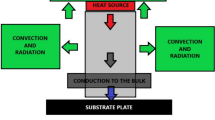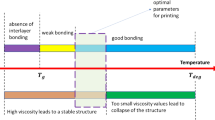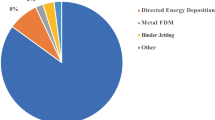Abstract
Evaluation of the quality of polymer welds is essential to the development and production maintenance of a welding process. Weld evaluation methods can be categorized as destructive or nondestructive and as quantitative or qualitative. Each of these assessment types gives different types of information about the weld joint. Experimental work has been undertaken to demonstrate the ability of selected methods to detect various flaws. One of these flaws is a lack of intermolecular diffusion, the movement of polymer chains across the melt interface. Without this, the bond achieved is merely adhesive, and not a true weld. Therefore, it is essential to be able to determine if diffusion has occurred to properly evaluate weld quality. While the degree of intermolecular diffusion can be predicted theoretically, this process can be time consuming. Additionally, theoretical models require validation, and the results are only as good as the inputs. Especially for industry, it is important to have a method to discern the presence or absence of diffusion in the welded joint. One of the simplest methods to do so is via heating after cross-section (HACS), which can provide a qualitative, if not quantitative, determination of whether intermolecular diffusion has occurred.



































Similar content being viewed by others
References
US Bureau of Labor Statistics. s.l.: www.bls.gov
(1999) Specification for standardized ultrasonic welding test specimen for thermoplastics. American Welding Society G1.2M/G1.2
Marcus M, Lester S (2009) Comparison of servo-driven ultrasonic welder to standard pneumatic ultrasonic welder. ANTEC
(2014) Standard guide for preparation of plastics and polymeric specimens for microstructural examination. ASTM E2015–4
(2013) Standard practice for pressure decay leak test method. ASTM E2930–13
Scheirs J (2000) Compositional and failure analysis of polymers: a practical approach. s.l.: John Wiley & Sons, Ltd.
Dodin MG (1981) Welding mechanisms of plastics: a review. J Adhes 12(2):99–111r
McIlroy C, Olmsted P (2017) Disentanglement effects on welding behaviour of polymer melts. Polymer 123:376–391
Fourche G (1995) An overview of the basic aspects of polymer adhesion. Part I: fundamentals. J Polym Eng Sci 35(12):957–967
Edwards SF (1967) The statistical mechanics of polymerized material. Proc Phys Soc 92:9
De Gennes L (1982) Dynamics of entangled polymer chains. Annu Rev Phys Chem 33:49–61
Bastien L, Gillespie J (1991) A non-isothermal healing model for strength and toughness of fusion bonded joints of amorphous thermoplastics. J Polym Eng Sci 31:1720–1730
Yang F, Pitchumani R (2002) Healing of thermoplastic polymers at an interface under non-isothermal conditions. Macromolecules 35:3213–3224
Willett J, O’Connor K, Wool R (1985) Mechanical properties of polymer-polymer welds: time and molecular weight dependence. lACS Polymer. Preprints 26(2):123–125
Wool (1984) Strength development at a symmetric polymer-polymer interface. Proceedings IX International Congress on Rheology. 573–580
Grewell D, Benatar A (2008) Semi-empirical, squeeze flow, and intermolecular diffusion model. II. Model verification using laser microwelding. Polym Eng Sci 1543–1549
Dealy J, Wissbrun K (1999) Melt rheology and its role in plastics processing.
Bueche F (1952) Viscosity, self-siffusion, and allied effects in solid polymers. J Chem Phys 20(12):1959–1964
Guo B (2004) A modified model predictions and experimental results of weld-line. Polymer 45:2911–2920
Bousmina M, Qiu H, Grmela M, Klemberg-Sapieha J (1998) Diffusion at polymer/polymer interfaces probed by rheological tools. Macromolecules 31:8273–8280
Doi M, Edwards S (1978) Dynamics of concentrated polymer systems. Part 1 - Brownian motion in the equilibrium state. J Chem Soc 12:1789–1801
Peggs (1985) Fractography and metallography of polymers. Microstructural Sci 12:423–434
Strand, Sorenson, Nelson (2003) Effects of friction stir welding on polymer. ANTEC, pp 1078–1082
Stevens A (1995) The effect of welding on the α- and β- crystalline forms of polypropylene. ANTEC, pp 1196–1200
Acknowledgements
EWI would like to thank Leister for the loan of the IR heater and controller used for heat treatment trials, Dukane for the donation of the ISTeP™ parts, and Branson for providing the ultrasonic welding press, without which, this work would not have been possible.
Funding
All work was funded internally by EWI.
Author information
Authors and Affiliations
Corresponding author
Ethics declarations
Conflict of interest
The authors declare no competing interests.
Additional information
Publisher’s note
Springer Nature remains neutral with regard to jurisdictional claims in published maps and institutional affiliations.
Recommended for publication by Commission XVI - Polymer Joining and Adhesive Technology
Rights and permissions
About this article
Cite this article
Marcus, M., Nitsch, M. Weld quality evaluation: heating after cross-section (HACS). Weld World 66, 1403–1419 (2022). https://doi.org/10.1007/s40194-022-01277-6
Received:
Accepted:
Published:
Issue Date:
DOI: https://doi.org/10.1007/s40194-022-01277-6




